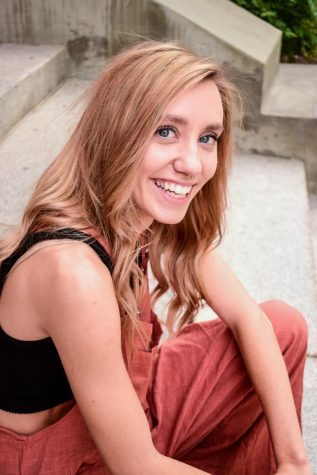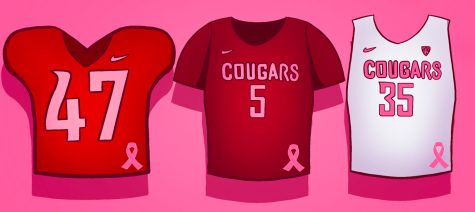Letter from the editor: Life submerged in pink
Cancer appears in any one, at any age; being proactive is crucial for early detection, editor-in-chief learned
The pink ribbon is a reminder of how we carry the effects of cancer with us through our lives.
October 13, 2022
During an already difficult year, Mothers Day 2020 brought even more heartbreaking news. Amidst the pandemic, my mother was diagnosed with breast cancer. My life was flipped upside down; I went from being a college student in the middle of a pandemic to a caregiver and a student.
We faced a long battle with cancer; watching my mom go through chemo, radiation and immunotherapy was something I hope people never have to experience.
When the end approached, I thought I was in the clear. I was ready to go back to being just a college student; all I wanted to do was take care of my cat in a fun way.
But no, that was simply not the case. My mom had done genetic testing to know if her cancer was hereditary or just her genes wanted to do something quirky, and found that it was hereditary.
Right after I turned 21 years old, I went in to get my first ever pap smear (TMI, sorry, folks). Before the doctor could do that, we, of course, had to go through a series of intensive questions to get an idea of some risks I may have. I shared with her my mom’s history of cancer, as well as my grandmas’, grandpas’ and uncles’ history.
I had to take the genetic test. It was out of the question for me not to do it. So that day, not only did I have my first ever pap smear, I also had to get a mammogram and genetic testing.
97%. That is the chance of my developing breast, ovarian or uterine cancer. Cool, I could deal with that percentage. I’m in my twenties, I’m still young. I don’t have to focus on that percentage quite yet.
Wrong. Summer of 2022, I developed a lump in my breast. I am a huge advocate of self-exams, and with my chances, I started pretty early. Finding that lump nearly gave me a heart attack, as I did not think I would find something so young.
I called my doctor instantly and went in for a professional doctor exam. She confirmed there was a lump, and I was sent to get an ultrasound and mammogram the next day.
Let me tell you something, mammograms hurt like a son of a bitch. I always end up completely bruised and in pain. But it’s 100% worth it.
That ultrasound confirmed there was a mass in my breast, and I went to get a mammogram to see more of it, as well as a biopsy to see if it was cancerous or benign.
The testing went through pretty quickly, so I did not have to wait long, but it felt like the longest time of my life.
I was also completely alone. Possibly having a cancerous mass in my breast. Possibly facing everything my mom faced.
I found out my mass was benign, just a two-inch cyst vibing out. Thankfully, I did not need surgery to have it removed.
But during the entire process, I learned something new. Here’s a little science for you all: there are four types of breast tissue. You have your standard fatty tissue, scattered fibroglandular dense tissue, heterogeneously dense tissue and extremely dense tissue, according to Breast 360.
I have extremely dense tissue. That means my chances of cancer have tripled. That means that 97% hereditary risk I have is now higher with the tissue type I have.
I am a young woman in my early twenties knowing that I will one day experience what my mom experienced.
I am here to tell you the importance of self-exams and going in for your yearly breast exams and mammograms. Anyone can develop breast cancer, and the key is early detection. There’s a 98-100% chance to survive stage one breast cancer, a 90-99% chance to survive stage two, and a 66-98% chance to survive stage three, according to Susan G. Komen.
I personally get yearly mammograms, pap smears and pelvic exams. You don’t have to be as serious as I am about tests, but at least do self-exams once a month and schedule breast exams once a year.
And remember, not only do women have the risk of developing breast cancer, but so do men. So everyone, let’s get those self-exams done and be proactive in testing!
















